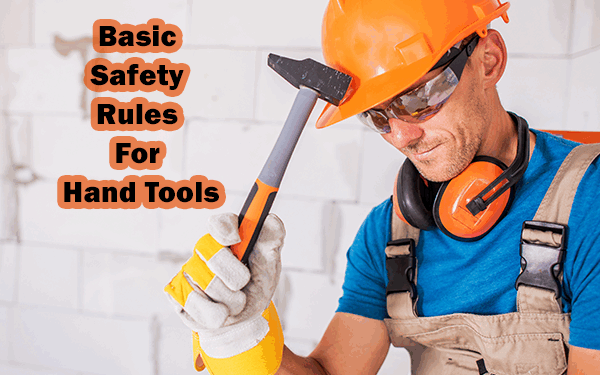Exploring essential Tool Safety Tips for Home Improvement Beginners, this introduction sets the stage for a detailed and informative discussion on the importance of safety in DIY projects.
The subsequent paragraphs will delve into the significance of Personal Protective Equipment, the necessity of Tool Inspection and Maintenance, and the importance of Safe Tool Handling Techniques for beginners embarking on home improvement projects.
Importance of Tool Safety
Tool safety is crucial for home improvement beginners to prevent accidents and injuries while working on projects. By following proper safety guidelines, beginners can ensure a safe and successful DIY experience.
Common Risks Associated with Using Tools Incorrectly
- Electric shock from power tools
- Cuts and lacerations from sharp tools
- Falling objects causing head injuries
- Trips and falls due to cluttered work areas
Statistics on Accidents Related to Tool Misuse
According to the National Safety Council, over 400,000 emergency room visits each year are due to injuries caused by hand and power tools. These accidents can be avoided by following proper safety precautions and using tools correctly.
Personal Protective Equipment (PPE)
Wearing the right Personal Protective Equipment (PPE) is crucial for your safety when working with tools. PPE helps protect you from potential hazards and reduces the risk of injuries. Here are some essential PPE items for beginners and how they can safeguard you while doing home improvement projects:
Safety Glasses
Safety glasses are a must-have when working with power tools or doing tasks that involve flying debris. They protect your eyes from dust, wood chips, or metal shards that could cause serious eye injuries. Make sure your safety glasses fit properly and are free of scratches for optimal visibility.
Hearing Protection
Earplugs or earmuffs are essential when using loud power tools like drills, saws, or sanders. Prolonged exposure to loud noises can damage your hearing, so wearing hearing protection is vital. Ensure your ear protection fits snugly and is worn correctly to effectively reduce noise levels.
Work Gloves
Work gloves provide protection for your hands from cuts, abrasions, and splinters when handling sharp tools or rough materials. Choose gloves that fit well and offer the right level of dexterity for the task at hand. Inspect your gloves regularly for any signs of wear and tear.
Respiratory Protection
When working with chemicals, paints, or dust-producing materials, respiratory protection such as masks or respirators is essential. These PPE items prevent inhalation of harmful substances that can damage your lungs or cause respiratory issues. Select the appropriate mask for the type of contaminants you will be exposed to.
Tool Inspection and Maintenance
Inspecting tools before each use is crucial to ensure their functionality and your safety. By taking the time to inspect and maintain your tools properly, you can prevent accidents and prolong the lifespan of your equipment.
Step-by-Step Guide on Tool Inspection
- Check for any visible damage, such as cracks, dents, or missing parts
.
- Inspect the handles for any signs of wear or looseness.
- Ensure that blades and cutting edges are sharp and free from rust.
- Test moving parts to see if they are functioning smoothly.
- Check power cords for any fraying or exposed wires.
Tips for Maintaining Tools
- Regularly clean your tools after use to prevent buildup of dirt and debris.
- Store tools in a dry place to avoid rust and corrosion.
- Oil moving parts to keep them lubricated and functioning properly.
- Sharpen blades and cutting edges when necessary to ensure optimal performance.
- Replace any damaged or worn-out parts immediately to maintain tool integrity.
Safe Tool Handling Techniques
Proper handling of tools is crucial for both safety and efficiency during home improvement projects. By following correct techniques, you can prevent accidents and ensure the longevity of your tools.
Using Tools for Their Intended Purposes
It is essential to use tools only for their intended purposes. Using a tool for a task it was not designed for can lead to damage, injuries, or even accidents. For example, using a screwdriver as a chisel may seem convenient, but it can result in the screwdriver slipping and causing harm.
Examples of Improper Tool Handling and Consequences
- Using a wrench as a hammer: This can damage the wrench, round off edges, and potentially injure the user due to lack of control.
- Standing on the top rung of a ladder: This can lead to loss of balance, falls, and serious injuries.
- Not wearing safety goggles when using power tools: This can result in eye injuries from flying debris or sparks.
End of Discussion
In conclusion, prioritizing tool safety is paramount for home improvement novices. By following the tips and guidelines provided, beginners can ensure a safe and successful DIY experience.
Questions and Answers
What are the essential Personal Protective Equipment items for beginners?
Beginners should invest in safety glasses, work gloves, and ear protection to safeguard against common hazards.
Why is tool inspection before each use important?
Inspecting tools before each use helps identify potential issues and ensures they are in good working condition, reducing the risk of accidents.
What are the consequences of improper tool handling?
Improper tool handling can lead to injuries, damage to materials, and even tool malfunctions, emphasizing the need for proper techniques.







